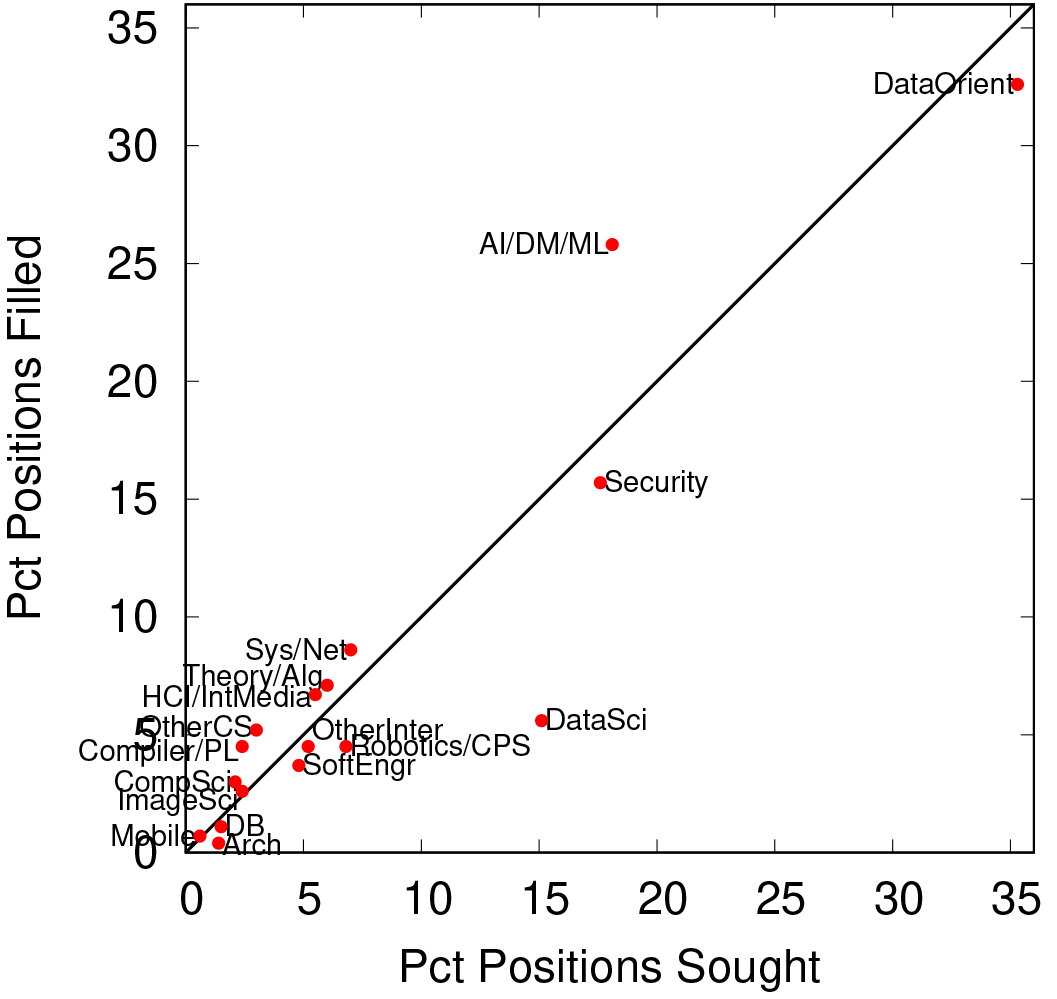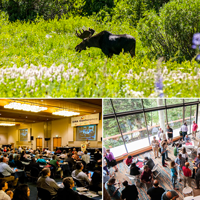2019 Computer Science Tenure-Track Faculty Hiring Outcomes
By Craig E. Wills, Professor and Department Head, Computer Science Department, Worcester Polytechnic Institute
This work directly follows previous work that analyzed current and future Computer Science needs via advertised tenure-track faculty searches for 2019. This follow-on work looked to understand the relative success of institutions in hiring the tenured/tenure-track faculty in the areas of Computer Science that were being sought.
Responses to a survey were obtained from 147 institutions that reported seeking tenure-track faculty in 2019. The distribution of survey responses based on institutional type was in roughly the same proportion as for all institutions that were searching for tenure-track faculty. Survey respondents reported seeking a total of 355 faculty positions.

Survey respondents reported filling a total of 267 tenure-track faculty for an aggregate success rate of 75%, which is comparable to previous years of this study. Examination on the success of the search for each of the 147 institutions found that 13% of institutions failed to hire any faculty, while 56% succeeded in hiring at least as many faculty as were being sought. These failed search results are better than and the institutional success results are comparable to survey results from 2018. In terms of results for different types of institutions, the top-100 PhD institutions had the smallest failed search rate of 2% while BS institutions had the highest failed search rate of 26%. Private MS&BS (64%) and public PhD (58%) institutions had the highest rate of hiring at least as many faculty as were being sought. Public MS&BS (46%) institutions had the lowest reported rate in hiring as many faculty as were being sought.
Reported results on the previous position for hired faculty show that three types of such positions continue to be dominant. 29% were previously in a post-doc/researcher position, 26% of hired faculty start with a newly-earned PhD and 23% were previously in a tenured or tenure-track position at another institution. The post-doc/researcher results are higher than results from a similar study in 2018.
Survey respondents reported on the number of hires in each of 16 clustered areas. The clustered area of AI, Data Mining and Machine Learning (AI/DM/ML) accounted for 26% of the filled positions (up from 19% in 2018). Security accounted for the next most with 16% of the filled positions (up from 14% in 2018) while Systems/Networking (9%), Theory/Algorithms (7%) and HCI/Interactive Media (7%) were the next areas in terms of filled positions. Further clustering of results for the AI/DM/ML, Databases and Data Sciences areas finds that 33% of hires were “Data Oriented,” which is up from 28% in 2018.
In comparing the areas of filled positions with the areas in which positions were sought, the AI/DM/ML area shows the biggest net positive net difference percentage of positions filled and sought. In contrast, the area of Security showed a smaller (than 2018) negative difference with 16% of filled positions, but 18% of sought positions. The area of DataSci had a 9% negative net percentage difference between filled and sought positions. Data-oriented areas accounted for 35% of sought positions and 33% of filled positions. In general, the net percentage differences between areas sought and filled were smaller than similar results in 2018.
A final analysis uses CRA Taulbee Survey results to compare areas for PhD production with area of faculty positions sought and filled. Security is the area with most obvious discrepancy between percentage of PhDs produced (6%) and faculty positions sought (18%). Security and AI/DM/ML are the areas with the highest discrepancy between PhDs produced and positions filled with a net of 10% and 9% more positions filled than PhDs produced.
In summary, the results continue to show a mix of success with just 56% of institutions hiring at least the number of faculty they were seeking. In terms of areas, AI/DM/ML, Databases and Data Science collectively represent a third of the positions filled, although PhD production in these areas was not this high. There continues to be stronger demand for positions in Security than PhD production or positions actually filled, although the differences are a bit less than were found in 2018.
The full report containing a description of the methodology and the complete results is available at http://www.cs.wpi.edu/~cew/papers/outcomes19.pdf.




